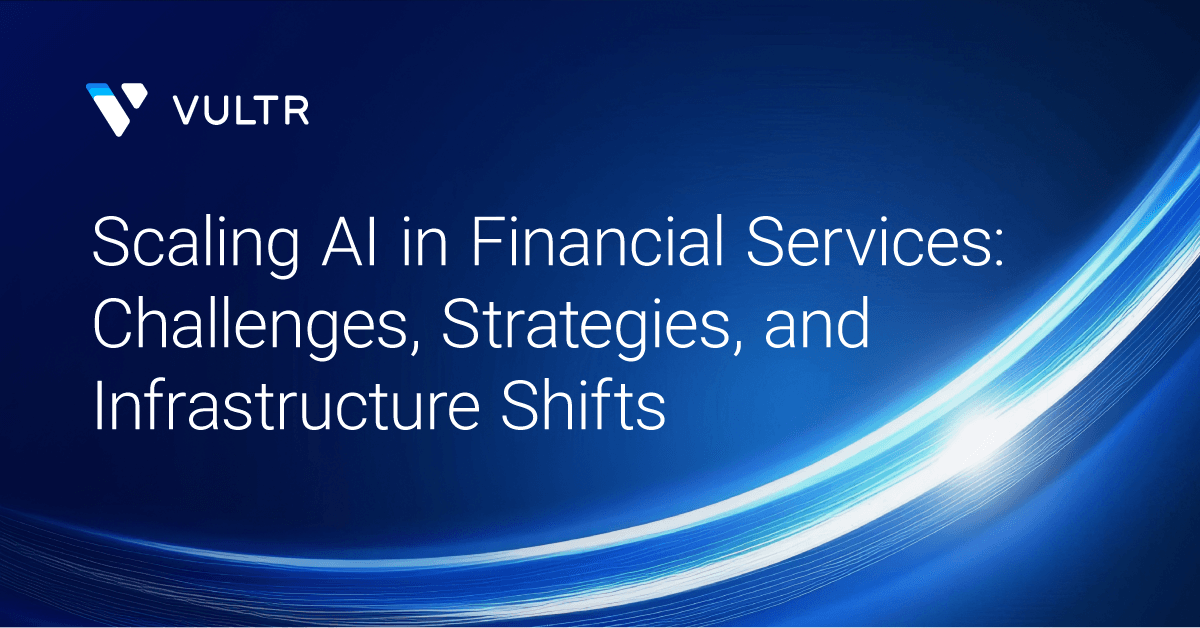When it comes to AI maturity, financial services (finserv) organizations are ahead of most industries. But unique challenges in deploying AI at scale have tempered finserv’s AI momentum.
A 2025 study by 451 Research, part of S&P Global Market Intelligence, surveyed companies across industries to gauge AI adoption, initiatives, and maturity levels. The findings show that finserv has a number of advantages over other sectors, including deep experience in AI-powered fraud detection, compliance monitoring, and customer engagement. But finserv is also navigating higher regulatory burdens, infrastructure bottlenecks, and cost pressures than most industries.
Explore the challenges slowing progress, the strategic choices around model development, and the infrastructure shifts that will determine how far and how fast the sector can scale in the full report here.
AI Maturity: Ahead, but not yet transformational
The study used a three-stage model to categorize AI maturity levels:
- Operational: AI has begun to enter daily operations.
- Accelerated: AI supports many daily functions and new use cases are actively pursued.
- Transformational: AI underpins fundamental aspects of the business and most daily functions.
Nearly two-thirds (63%) of financial services organizations are in the “Accelerated” stage — a 16-point jump from last year. However, only 23% have reached the “Transformational” stage, 14 points lower than the level across all other industries Thirty-nine percent of finserv companies expect to reach Transformational maturity in the next two years, but the trajectory still trails other industries, where over half (53%) expect to reach this stage.
High stakes, heavy scrutiny: Finserv’s AI challenges
This measured pace reflects the steeper, more complex obstacles finserv organizations face compared to other industries, including skills shortages, data quality issues, and scaling AI in production.
Governance, legal, and compliance concerns are also pronounced (63%), reflecting the scrutiny of a regulated industry where errors carry outsized risk.
Finserv also performed slightly below all industries in business outcomes such as customer satisfaction, revenue, cost reduction, marketing, and market share. But interestingly, finserv has invested more in AI to enhance performance in many of these areas than other industries have, particularly market share and customer satisfaction.
Building vs. buying: How finserv approaches AI models
More than a quarter (26%) of finserv organizations build proprietary AI models from the ground up, which is nearly three times higher than other industries. By contrast, 36% rely mainly on open-source models (vs. 46% in other industries), and 38% use cloud-based AI services (vs. 45%).
Proprietary models are important in financial services because they help secure intellectual property, tailor solutions for risk-sensitive operations, and align with oversight requirements. But developing them demands significant infrastructure investment and the right talent, which remains in short supply across the sector.
Shifting AI workloads toward diversified infrastructure
Deployment patterns for AI training and inference show a clear shift away from hyperscalers, with both financial services and other industries favoring alternative clouds.
Finserv companies run 35% of training workloads in alternative public clouds vs. 28% in hyperscalers, similar to all other industries (36% and 27%).
For inference, finserv runs 32% in alternative clouds vs. 23% in hyperscalers, again closely matching other industries (33% and 23%).
This distribution reflects a deliberate strategy: securing compute power and agility while maintaining governance, data protection, and resilience. It also reflects an attempt to offset data quality challenges, since more controlled environments can improve how data is stored, validated, and accessed for AI workloads.
Top challenges in real-time inferencing
As AI inference moves deeper into real-time financial transactions, infrastructure barriers become more visible.
- Fifty-five percent of finserv companies say storage performance, particularly speed and connectivity, is a bottleneck for processing transactions at market pace.
- Forty-six percent of finserv companies say data locality is a primary constraint, driven by the need to keep sensitive financial data within approved jurisdictions.
Platform engineering shifts from hyperscaler-first to customized internal builds
Financial services organizations are rethinking how they build and operate AI platforms spanning development, training, inference, and scaling. While a majority of finserv and other industries still rely on hyperscaler Platform-as-a-Service (PaaS) solutions, survey results show a trend toward internal platform engineering — using builds on alternative cloud environments as the preferred method for scaling.
Fifty-five percent of financial services organizations run centralized AI platforms through hyperscaler-based PaaS; 34% operate internal builds; and 11% remain decentralized. Within 12–24 months, internal PaaS adoption is projected to rise to more than half (52%), up from one-third today.
From readiness to results: The next chapter in finserv AI
The survey data paints a clear picture: financial services is ahead in AI maturity, but the path forward is complex. That complexity is shaping how firms invest, driving them to:
- Build more proprietary models than other industries
- Spend aggressively on IT, cloud, AI, and GPUs to support those models
- Shift workloads away from hyperscalers toward alternative clouds, data centers, and edge
- Develop internal platform engineering capabilities
Rather than racing toward rapid transformation, financial services firms are building AI maturity step by step: protecting compliance, securing intellectual property, and adapting infrastructure to meet real-time demands. For financial services leaders, the central challenge is to scale AI responsibly without losing the trust, security, and stability that define the sector.
Infrastructure choices aren’t just technical details. They’re the foundation for scaling AI in a secure, compliant, and cost-efficient way. For a deeper look at how financial services firms are advancing AI maturity, explore the complete 2025 Unlocking the Power of AI in Financial Services benchmark report.

